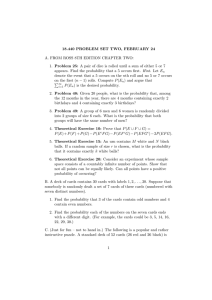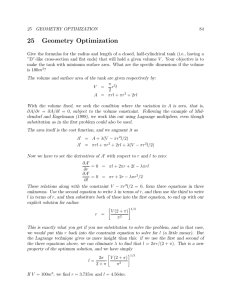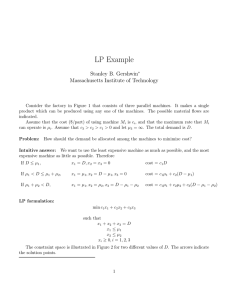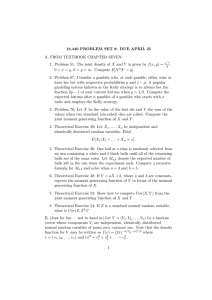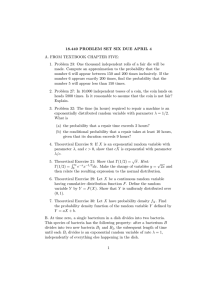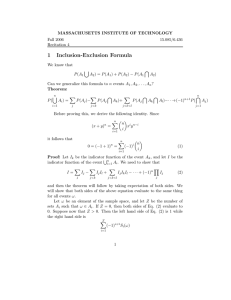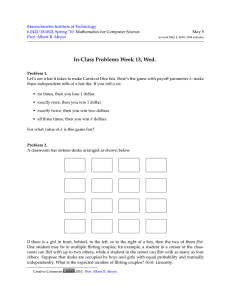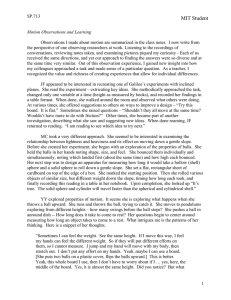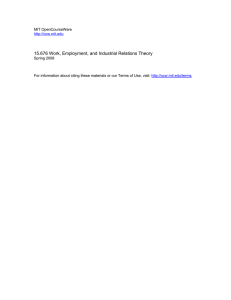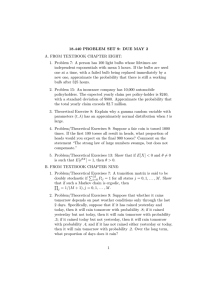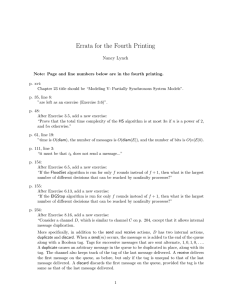Document 13434428
advertisement
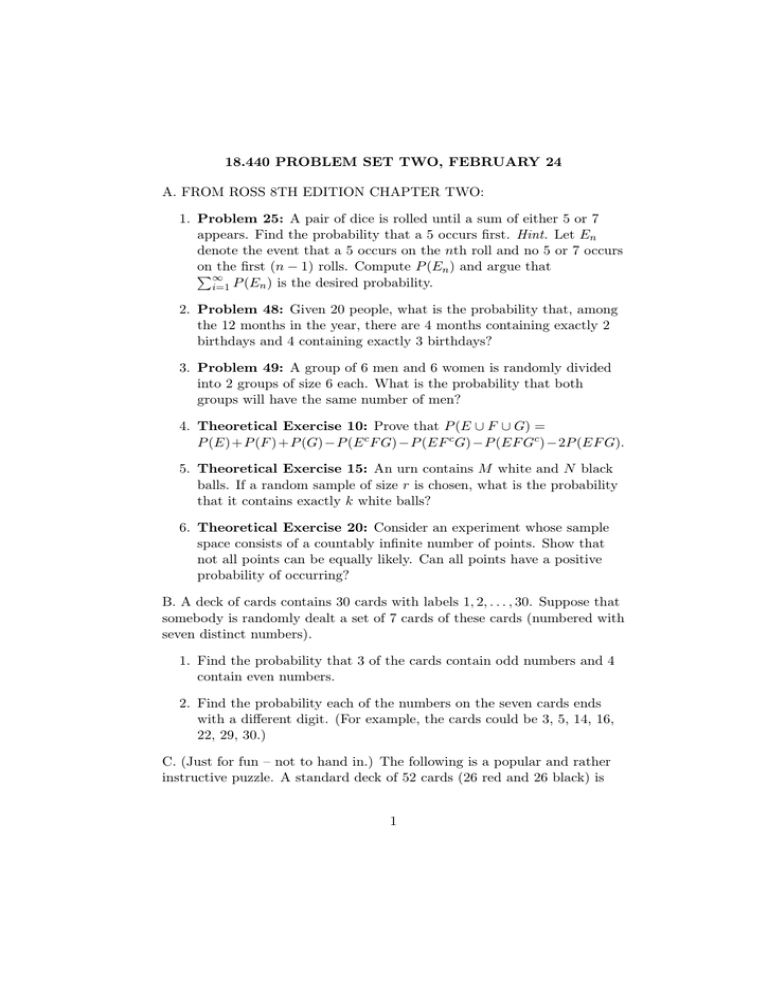
18.440 PROBLEM SET TWO, FEBRUARY 24 A. FROM ROSS 8TH EDITION CHAPTER TWO: 1. Problem 25: A pair of dice is rolled until a sum of either 5 or 7 appears. Find the probability that a 5 occurs first. Hint. Let En denote the event that a 5 occurs on the nth roll and no 5 or 7 occurs on o∞the first (n − 1) rolls. Compute P (En ) and argue that i=1 P (En ) is the desired probability. 2. Problem 48: Given 20 people, what is the probability that, among the 12 months in the year, there are 4 months containing exactly 2 birthdays and 4 containing exactly 3 birthdays? 3. Problem 49: A group of 6 men and 6 women is randomly divided into 2 groups of size 6 each. What is the probability that both groups will have the same number of men? 4. Theoretical Exercise 10: Prove that P (E ∪ F ∪ G) = P (E)+P (F )+P (G)−P (E c F G)−P (EF c G)−P (EF Gc )−2P (EF G). 5. Theoretical Exercise 15: An urn contains M white and N black balls. If a random sample of size r is chosen, what is the probability that it contains exactly k white balls? 6. Theoretical Exercise 20: Consider an experiment whose sample space consists of a countably infinite number of points. Show that not all points can be equally likely. Can all points have a positive probability of occurring? B. A deck of cards contains 30 cards with labels 1, 2, . . . , 30. Suppose that somebody is randomly dealt a set of 7 cards of these cards (numbered with seven distinct numbers). 1. Find the probability that 3 of the cards contain odd numbers and 4 contain even numbers. 2. Find the probability each of the numbers on the seven cards ends with a different digit. (For example, the cards could be 3, 5, 14, 16, 22, 29, 30.) C. (Just for fun – not to hand in.) The following is a popular and rather instructive puzzle. A standard deck of 52 cards (26 red and 26 black) is 1 shuffled so that all orderings are equally likely. We then play the following game: I begin turning the cards over one at a time so that you can see them. At some point (before I have turned over all 52 cards) you say “I’m ready!” At this point I turn over the next card and if the card is red, you receive one dollar; otherwise you receive nothing. You would like to design a strategy to maximize the probability that you will receive the dollar. How should you decide when to say “I’m ready”? 2 MIT OpenCourseWare http://ocw.mit.edu 18.440 Probability and Random Variables Spring 2014 For information about citing these materials or our Terms of Use, visit: http://ocw.mit.edu/terms.
